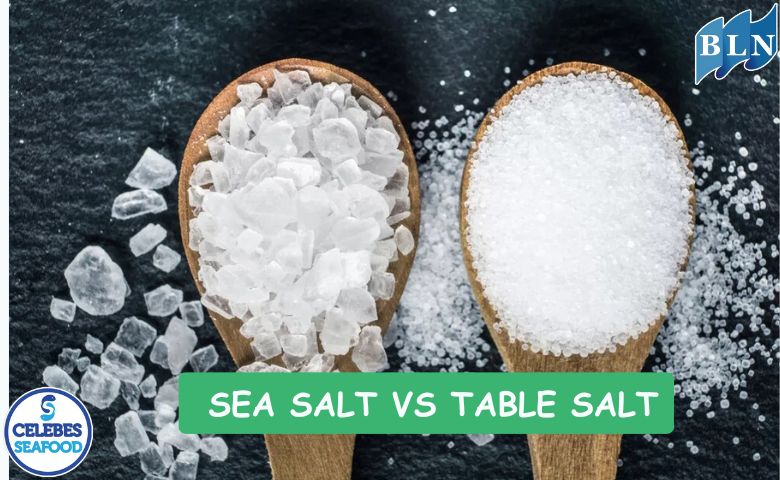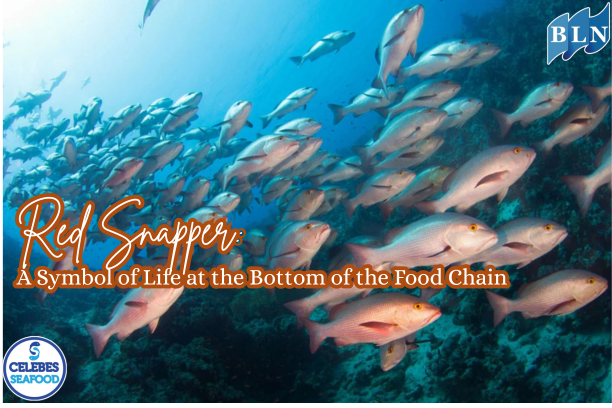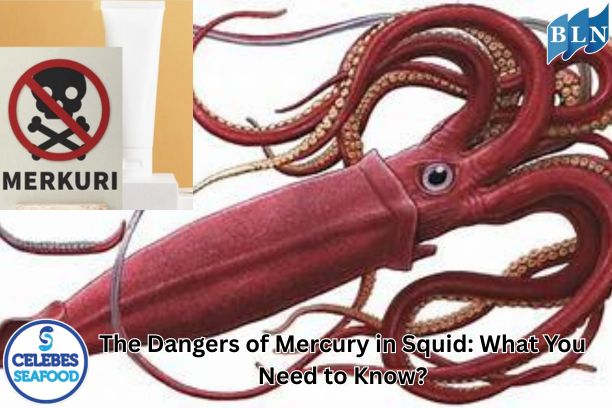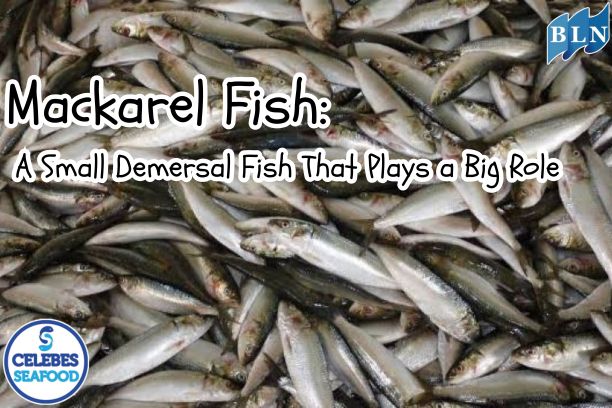Sea Salt VS Table Salt
By. Edi - 24 Jun 2025
lautnusantara.com Salt, or sodium chloride (NaCl), is one of the most basic and important compounds in our lives. Often we only know it as a kitchen spice to add flavor, but its role goes far beyond that. Salt has been an integral part of the history of human civilization, playing a vital function in health, industry, and even religious rituals.
When shopping at the supermarket, we are often faced with a variety of salt choices. The two most common types are sea salt and table salt. Although both are sodium chloride (NaCl) and have the main function as a flavor enhancer, there are significant differences in the production process, mineral content, and even texture and taste. So, which is better?
A. Table Salt: Practical and Fortified
Table salt is the most common and widely used type of salt. The production process involves mining salt deposits from the ground, then going through a series of extensive processing. This salt is usually refined to remove other minerals and impurities, resulting in uniform and fine salt crystals.
One of the main characteristics of table salt is the addition of iodine. Iodine is an essential micronutrient that the body needs for healthy thyroid function. Iodine deficiency can lead to health problems such as goiter and cognitive impairment. Therefore, iodine fortification of table salt is an important public health measure to prevent this deficiency. In addition to iodine, table salt often contains anti-caking agents such as calcium silicate to prevent it from clumping, making it easy to pour and mix.
Pros of table salt:
- Iodine fortified: Essential for thyroid health.
- Affordable and readily available: Available everywhere.
- Smooth, uniform texture: Easily soluble and suitable for everyday cooking and baking.
Cons of table salt:
- Less complex flavor: Because it is refined, it tends to taste just plain salty.
- Lack of other minerals: The refining process removes traces of naturally occurring minerals.
B. Sea Salt: Natural and Rich in Flavor
Sea salt is produced by the evaporation of seawater, often with the help of sunlight and wind. This process involves minimal to no heavy processing, allowing the salt to retain traces of minerals and other elements that are naturally present in seawater, such as magnesium, calcium, potassium, and zinc. It is this mineral content that is often claimed to give sea salt a more complex flavor and unique nuances than table salt.
The texture of sea salt varies, from fine grains to large, crunchy crystals. Fleur de Sel, for example, is a premium type of sea salt that is hand-collected from the surface of the water and is highly prized by chefs for its crunchy texture and subtle ocean flavor.
Pros of sea salt:
- Naturally rich in minerals: Contains a variety of trace minerals in addition to sodium chloride.
- More complex flavor: Richer flavor profile due to its mineral content.
- Variable texture: Provides a different sensation in the mouth, perfect for finishing dishes.
Cons of sea salt:
- Variable iodine content: Not always fortified with iodine, so you may need to look for iodine intake from other sources.
- More expensive: Especially for premium types like Fleur de Sel.
- Potential for microplastics: While small, there are concerns about trace microplastics that may be present in sea salt due to marine pollution.
So, Which Should You Choose?
The choice between sea salt and table salt largely comes down to personal preference and dietary needs.
- If you’re looking for consistent iodine intake and affordability, fortified table salt is an excellent choice and is widely recommended by health organizations.
- If you’re looking for a more complex flavor profile and unique texture to finish dishes or experiment with in your cooking, sea salt can be an appealing option. However, make sure you’re getting your iodine from other sources in your diet (e.g., seafood, dairy, eggs).
Ultimately, the most important thing is to consume salt in moderation, regardless of the type. Both sea salt and table salt provide the sodium your body needs, but excessive consumption can have negative health effects.
If you are interested in our Coral Trout Fillet Skin On, CORAL TROUT WGG WHOLE GILLED GUTTED, TOMATO COD WHOLE GILLED GUTTED please do not hesitate to contact us through email and/or whatsapp.








